The concentration of harmful particles in the air of the metropolitan region far exceeds the thresholds considered acceptable by the World Health Organization, according to studies consulted by AyiboPost
Smoke from motor vehicles (most of them in poor condition), industry, the open-air burning of rubbish, and dust pour pollutants and particles into the Port-au-Prince air which far exceed the thresholds recommended by the World Health Organization (WHO), according to two studies from the State University of Haiti (UEH) consulted by AyiboPost.
The air in areas such as Poste Marchand, Canapé-Vert or Bourdon contains twice as much nitrogen dioxide (NO2) as the 24-hour average of 25 µg/m3 (microgram per cubic meter) set by the WHO, based on ongoing scientific work from the Environmental Sciences Laboratory of the École Normale Supérieure (ENS) of the UEH.
Nitrogen dioxide is associated with respiratory illnesses like asthma.
The excess concentrations of this gas for the aforementioned zones are respectively 53 µg/m3, 50 µg/m3, and 50 µg/m3.
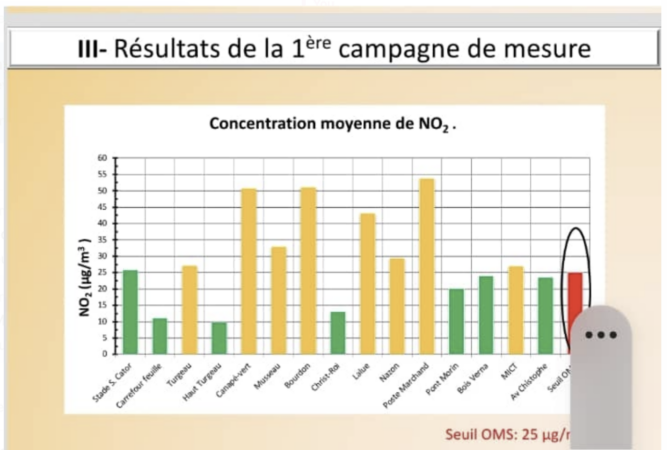
Graph showing the level of nitrogen dioxide (NO2) in the air in the metropolitan area of Port-au-Prince. | Source: ENS/UEH
Near the Sylvio Cator stadium, the concentration of fine particles (PM10) is 130 µg/m3, approximately three times higher than the WHO threshold of 45 µg/m3.

Graph showing the level of fine particles (PM10) in the air in the metropolitan area of Port-au-Prince. | Source: ENS/UEH
It should be noted that particulate matter suspended in the air is so small that it can easily penetrate the respiratory tract.
These microparticles, categorized as carcinogenic by the WHO, can lodge in the lung and penetrate the blood, thereby increasing the risk of lung cancer, heart disease, etc.
Air quality is also poor on Mgr Guilloux street, in the vicinity of the State University of Haiti Hospital (HUEH).
There, the air contains a carbon monoxide (CO) content estimated at 5000 µg/m3.
These microparticles, categorized as carcinogenic by the WHO, can lodge in the lung and penetrate the blood, thereby increasing the risk of lung cancer, heart disease, etc.
Toxic and dangerous, carbon monoxide in the area greatly exceeds the WHO recommended threshold of 4000 µg/m3 over 24 hours.
For fine particles (PM 10, PM 2.5), they are respectively 105 µg/m3 and 17 µg/m3.
The situation is worrying in certain places in Delmas.
From January to September 2020, four sites in the municipality — Glue Bar and Grill in Delmas 65, the National Building and Public Works Laboratory (LNBTP) in Delmas 33, Siloé, and the National Society of Industrial Parks (SONAPI) — were investigated by the Energy and Alternative Technologies Research Unit (URETA) of the Faculty of Sciences (FDS) of the UEH.

Website of the Ministry of the Environment located within the SONAPI complex, between Toussaint Louverture Boulevard and Industries Boulevard.
At Glue Bar and Grill, the carbon monoxide content was 677.22 μg/m3, and at LNBTP, Siloé, and SONAPI it was respectively 647.93 μg/m3, 545.54 μg/m3, and 486.85 μg/m3.
It should be noted that the Ministry of the Environment is located within the site of the National Society of Industrial Parks where the increase in these pollutants was observed.

Translate to English: « Glue Bar and Grill’s location is along Delmas 65 road. »
It is worth recalling that the WHO recommends 4 µg/m3 as maximum exposure for 24 hours.
Contrary to the 25 μg/m3 over 24 hours recommended by the WHO, nitrogen dioxide showed a dizzying increase at the Glue Bar and Grill with 106.19 μg/m3, and 561.88 μg/m3 at the LNBTP.

National Laboratory of Buildings and Public Works website located in Delmas 33 alongside the Ministry of Public Works, Transport, and Communication.
For chemist and UEH teacher Yvens Chérémond, “these studies show that we are facing pollution that is quite silent, sneaky, and can kill people.”
According to the researcher who co-directed the FDS study, we must “raise awareness among the population, and set up an observatory that will monitor air quality in order to have more data and warn people in real time about the danger.”
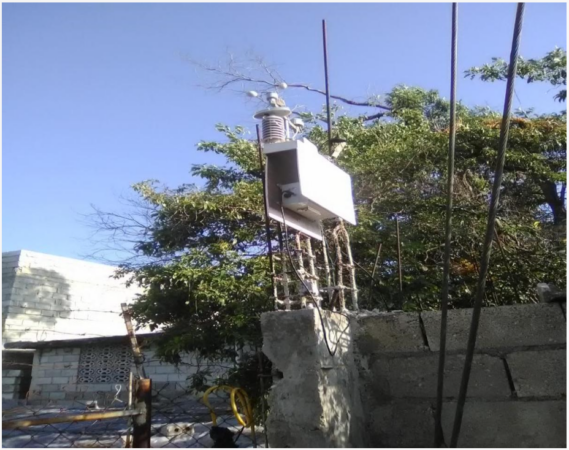
Site of Siloé located in Delmas 33 extended.
The use of diesel engines in most sampling areas can help explain the dangerous concentrations.
For Dieuseul Prédélus, specialist in atomic and molecular physics, and a teacher-researcher at the École Normale Supérieure of the UEH, if the concentrations of pollutants greatly exceed the recommended thresholds “it is because we live in an extremely polluted environment.”
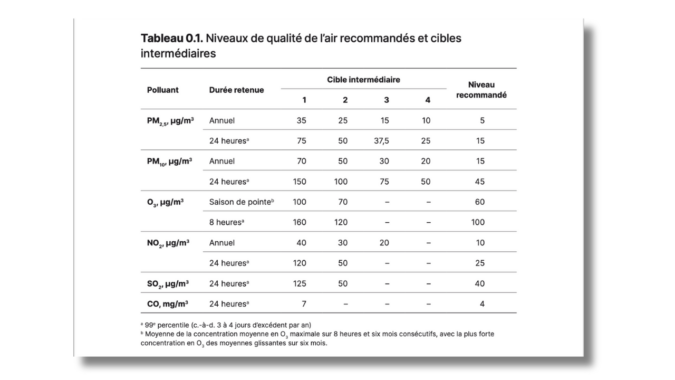
Source : OMS, 2021
According to the WHO, in 2019, 4.2 million premature deaths worldwide were due to pollution.
There are no systematic estimates for Haiti, but the confluence of aggravating factors, due to poor nutrition, pollution and insecurity, creates various public health problems in the country.
“The issue of air pollution is not addressed at the level of the Ministry of the Environment,” notes Evans Louis, director of the Living Environment and Sanitation department at the ministry.
In Haiti, when we talk about the environment, we see at first glance: waste management and reforestation. “This perception is even found within the Ministry of the Environment,” regrets Evans Louis.
On October 23, 2018, the Pan American Health Organization/World Health Organization (PAHO/WHO) donated three air quality meters to the Living Environment and Sanitation Directorate of the Ministry of the Environment. An initiative valued at US$5,000.

A pollution meter used by the Laboratory of Environmental Sciences at the École Normale Supérieure of the UEH to collect various pollutants in the Champ de Mars area.
The project consisted of installing these devices in three departments: the West, the North, and the South.
However, since the end of the mission of WHO water and sanitation advisor Julio Urruela Roquero, who led the partnership, no further action has been taken on the initiative.

Translation: Source: Research Unit in Energy and Alternative Technologies (URETA) of the Faculty of Sciences (FDS) of the UEH.
According to the pulmonologist, internist and head of the Sanatorium hospital in Port-au-Prince, Jean Ardrouin Esther Louis Charles, the pollutants mentioned by the UEH studies can cause “skin lesions, rhinitis which causes the inflammation of nasal passages, redness in the eyes, chronic bronchitis, asthma, and even cases of lung cancer.”
Read also: Gallons of water stored in the sun, a health hazard in Haiti
Kelly Celestin, a doctor in charge of HUEH’s internal medicine department, tells AyiboPost that « these pathologies are very common at the HUEH. »
English translation by Sarah Jean.
Cover image: Des agents de la PNH ont lancé du gaz lacrymogène pour disperser les manifestants qui tentaient d’incendier un stand dressé pour le carnaval au Champ-de-Mars, le 12 février 2024. | Jean Feguens Regala/AyiboPost
Stay in touch with AyiboPost through :
► Our WhatsApp channel : click here
► Our WhatsApp Community : click here
► Our Telegram canal : click here



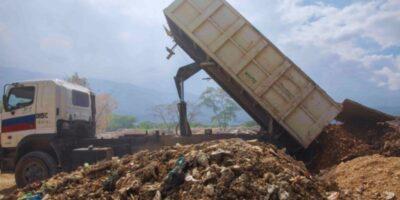
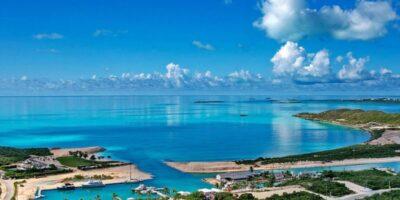


Comments